Botanica, Tiffany & Co.’s 2022 Blue Book collection
Tiffany & Co. has channelled the work of its legendary designer Jean Schlumberger and others.
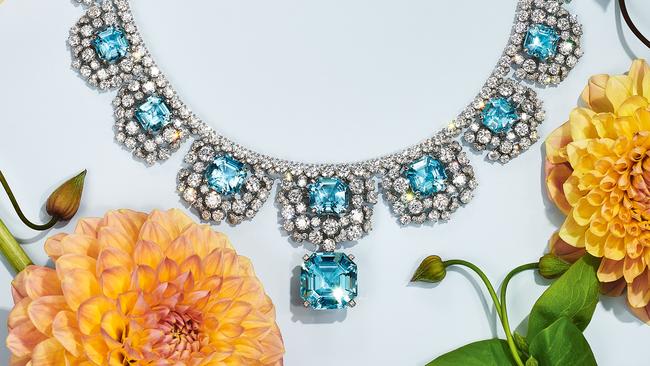
Jean Schlumberger is the gift that keeps on giving for Tiffany & Co. Few designers have the Midas touch that creates items that endure long after they leave their drawing boards. Even fewer leave a design legacy that, more than three decades after their death, is still being unearthed.
The celebrated French-born jewellery designer worked for Tiffany & Co from 1956 until his retirement in 1970. He created some of the house’s most iconic designs, known for their whimsical interpretations of natural forms. His work was prolific, and has been described as one of the most imaginative collections of jewellery the world has ever seen. “He so well understands the fantastic beauty of the world,” Diana Vreeland, the legendary fashion editor once said.
-
Explore the Watch and Jewellery special edition of WISH, available online and in print on Friday, 18 November.
-
For the brand’s 2022 Blue Book collection – its annual collection of its most extraordinary high jewellery – several Schlumberger designs have been reworked with new and unexpected gemstone combinations. In addition, designs that were little more than a sketch in Tiffany’s archives have been brought to life for the first time. “That’s the genius of Schlumberger, the relevancy,” says Victoria Wirth Reynolds, chief gemologist at Tiffany & Co. “His designs are as modern now as they were almost 50 years ago. Great design is great design.”
Tiffany & Co’s extensive archives are a constant source of inspiration for Reynolds as well as the company’s design team. “The process sometimes really does begin with the archives,” says Reynolds. “Our legacy, our DNA, is something we keep coming back to in order to make sure we are pushing the boundaries, that we are reinventing it and that there’s an authenticity to what we do.”
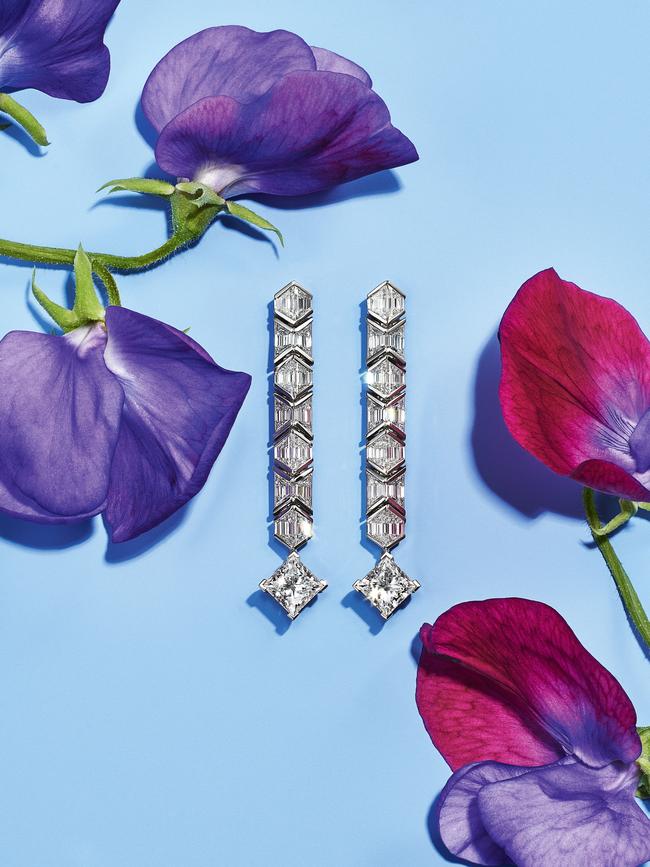
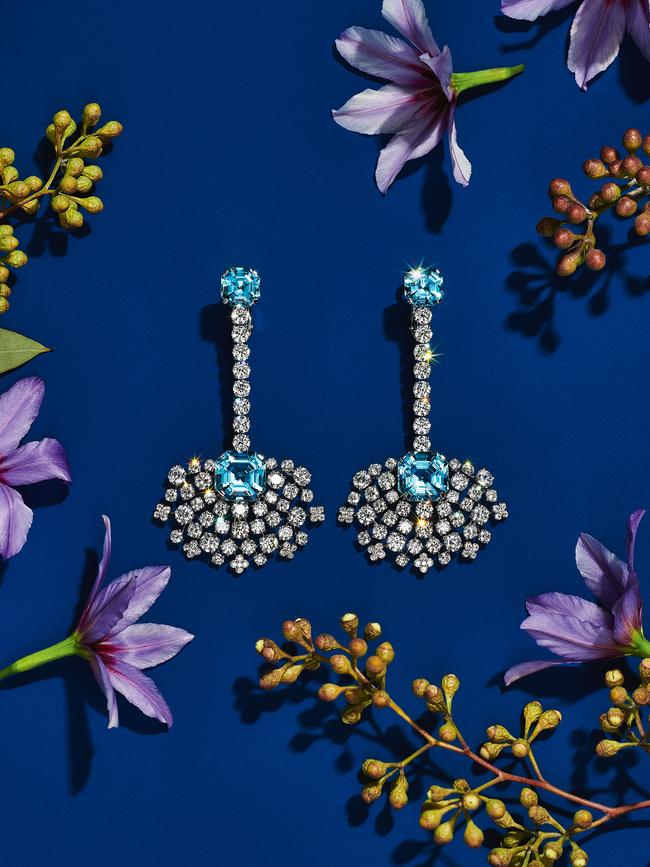
Some collections, she says, are more inspired by the archives than others. The theme of the 2022 Blue Book collection is Botanica. It draws on the house’s heritage of floral-inspired jewels and was inspired by a number of different designers, including Schlumberger, Louis Comfort Tiffany, the son of the company’s founder, and Edward C. Moore, the creative force who led Tiffany & Co to unparalleled success during the second half of the 19th century. “Some of those designs are no less relevant today than they [were when they were first created],” says Reynolds.
The nature-based collection is divided into three core themes: Queen Anne’s Lace, Painted Blossom and the designs of Jean Schlumberger.
The Queen Anne’s Lace theme draws from archival photographs of Louis Comfort Tiffany-designed hair ornaments that evoke the wildflower. For this collection the design has been reimagined in elaborate diamond florets, emerald-cut coloured gemstones and, on the underside, baskets of fine platinum wires that form the settings. “I often say that with a great piece of jewellery you look at it from the front and the back,” says Reynolds. “But the connection of how Queen Anne’s Lace works as a flower is that you have these stems that radiate from the centre and the attention to detail we spent looking at the blossoms and looking at how we are going to incorporate the aquamarine into the pieces is extraordinary.”
A series of brooches in the Painted Blossom theme, inspired by irises, poppies and tulips, have been created through an innovative and labour-intensive enamelling technique. On the iris brooch, for example, hand-moulded petals have been combined with custom cut yellow diamonds to accent the stem. “The palette of unenhanced emeralds and sapphires, perfectly matched aquamarine suites, fancy intense yellow diamonds and more recalls the jewel tones of summer botanicals,” says Reynolds.
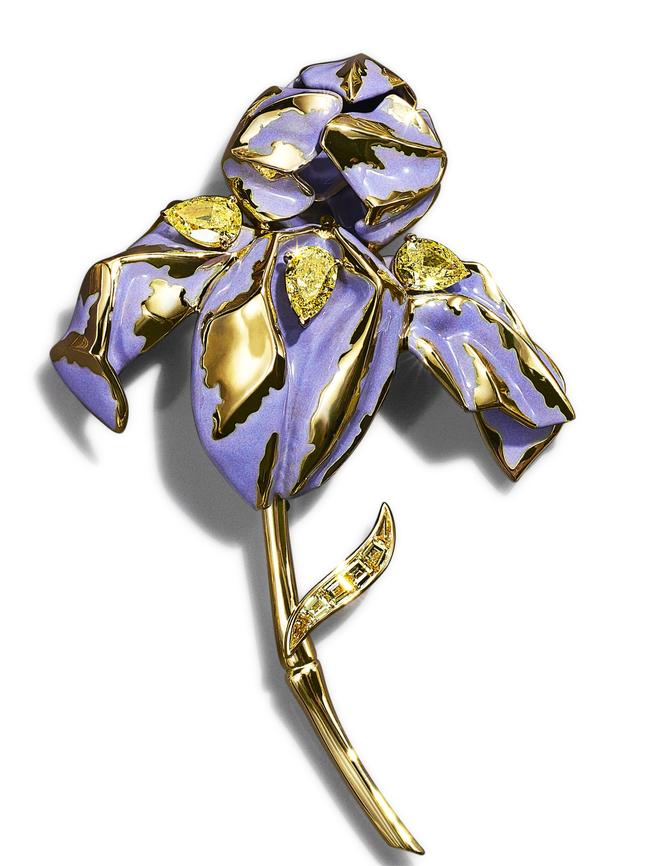
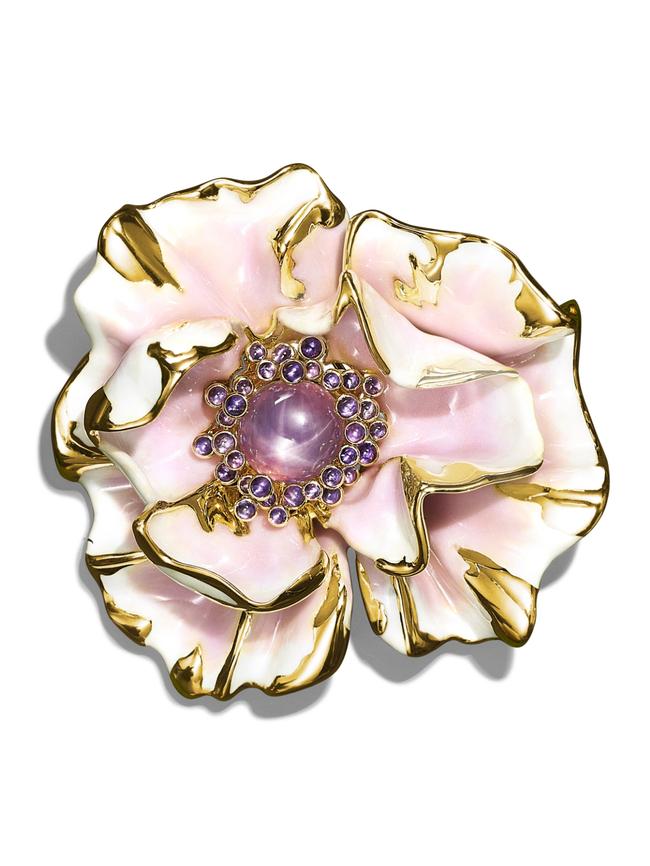
“I always tell people a lot of the other jewellery houses would focus on rubies, emeralds, sapphires and diamonds, and you will see that most high jewellery is lifted up from those four segments,” says Reynolds. “And if you look at Jean Schlumbverger’s work it’s anything but that. It’s turquoise, opals, moonstones, garnets … he utilises gems the way a painter uses a palette. He wasn’t at all concerned about price – it was about finding the right colour and the texture that really worked in the piece, so I think his pieces are literally works of art. “
Schlumberger’s drawings, according to Reynolds, left a lot open to interpretation and he wasn’t specific about what gemstones could be used. For the 2022 Blue Book collection, one of his three designs conceived in 1958 for the Tiffany Diamond has been brought to life for the first time. The 128-carat yellow Tiffany Diamond was famously set in the ribbon necklace for Audrey Hepburn for the film Breakfast at Tiffany’s – then it was set in the distinctive Bird on a Rock design for many years and is now back in another necklace design (which Beyoncé can be seen wearing in the brand’s latest advertising campaign). A bracelet design
Schlumberger created for the diamond has been produced for the first time with a 47-carat aquamarine at its centre instead. The design was very technically complex, says Reynolds, with the petals of the flowers holding the stone in place instead of having prongs, which means if there are any gaps in the setting the stone might move. “It took us several years to get it right and it’s one of the finest Jean Schlumberger pieces we’ve made.”
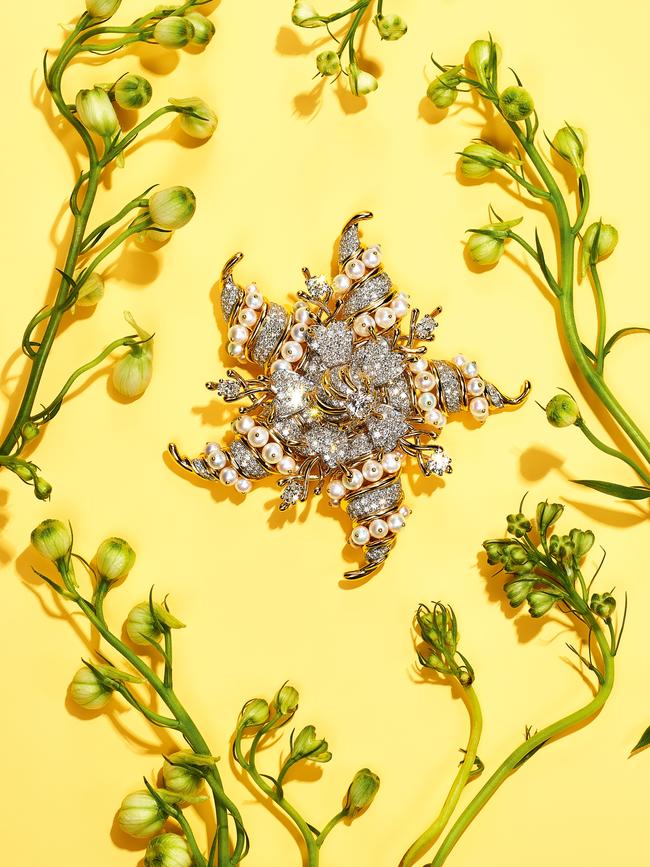
It was also one of the first pieces in the 2022 Blue Book collection to find a buyer. Given the hours that go into producing a piece like this, Reynolds says there is a slight feeling of melancholy when it’s sold. “Honestly, I’m happiest when we place a piece of jewellery with someone who loves it as much as I do,” she says.
One of the biggest changes Reynolds says she has noticed post-Covid is that clients are quicker to buy something now if they love it. “I find that our clients are purchasing things that bring them joy and love that maybe they would have waited on a bit more,” she says. “Up until the pandemic people thought they had all the time in the world and the pandemic put this framework around it that nothing is forever.”
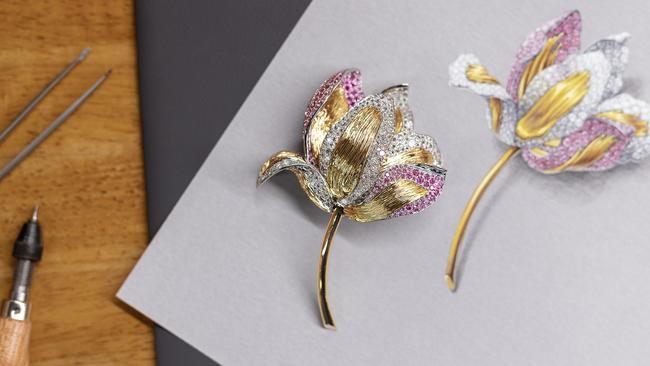
The watches and jewellery division of Tiffany & Co.’s parent company, LVMH, has been one of the best performing sectors in the first three quarters of this year, according to the latest figures released by the French conglomerate, thanks largely to the strong momentum of Tiffany & Co. in the US, which LVMH acquired in January 2021. LVMH doesn’t break out revenue for individual brands but the watch and jewellery division, which also includes Chaumet, TAG Heuer and Bulgari among others, saw growth of 23 per cent for the nine months to the end of September.
The other change for Reynolds and her team post-Covid is that she is back to her old way of working. “I’m definitely racking up the frequent flyer miles and travelling the world again – my work has very much gone back to the way it was.” While technology has made some of the work of a gemologist for a major jewellery house more efficient when it comes to collaborating with the design team, as far as sourcing stones is concerned, there is no replacement for being there. “You have to look at it and hold it and be present with it,” says Reynolds. “Then when I see a gemstone that we’ve bought transformed into a piece of jewellery that’s nothing short of miraculous.”


To join the conversation, please log in. Don't have an account? Register
Join the conversation, you are commenting as Logout